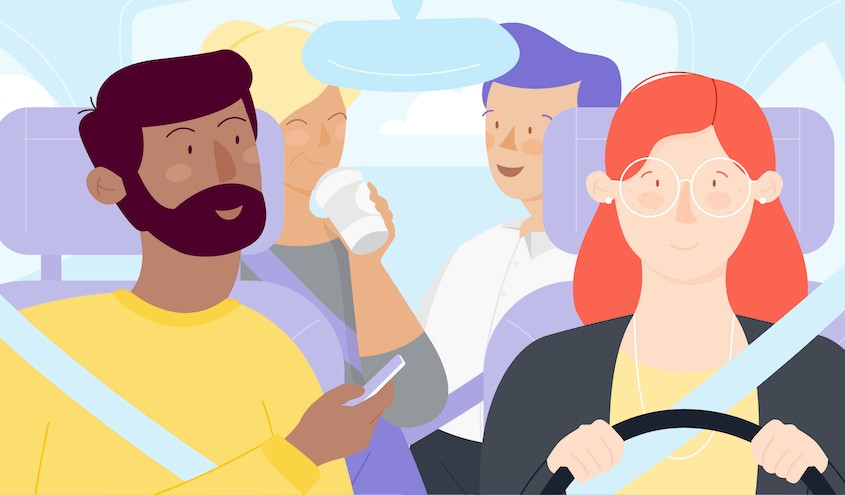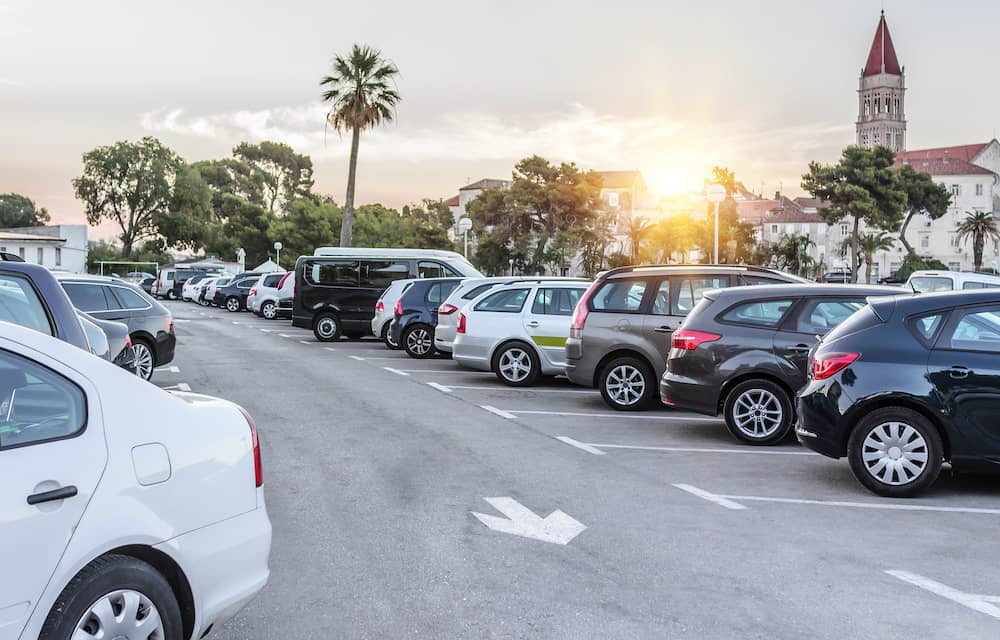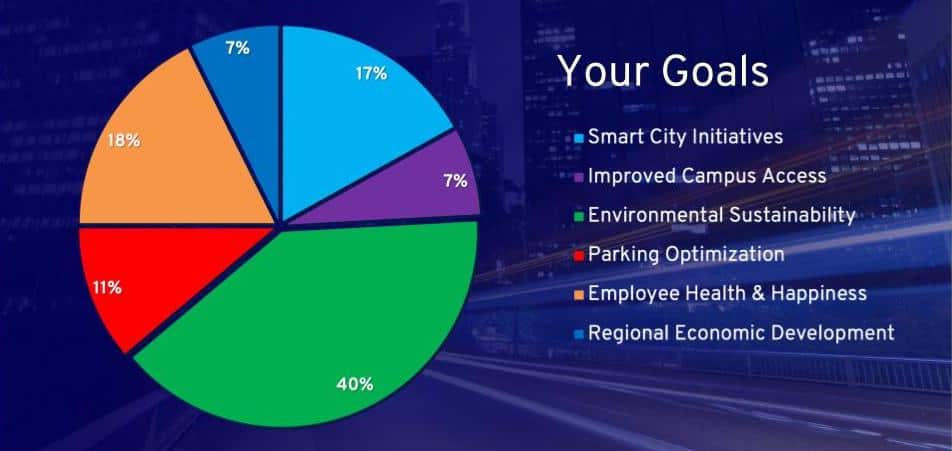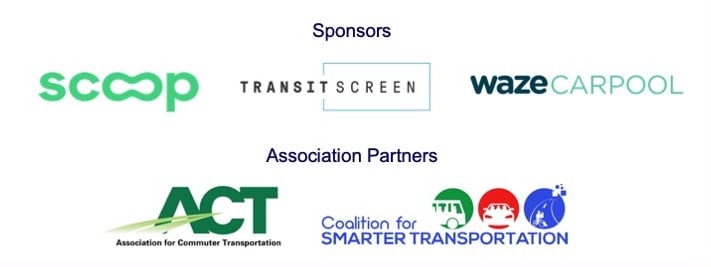Make Commuter Engagement Your Business
 The way YOUR people get to work is YOUR business. More and more senior executives are realizing the truth: if you have employees, the commute is an important business concern. The old ways of thinking about parking facilities, long, stressful commutes, and their impact on corporate sustainability are costing employers money and valuable employees.
The way YOUR people get to work is YOUR business. More and more senior executives are realizing the truth: if you have employees, the commute is an important business concern. The old ways of thinking about parking facilities, long, stressful commutes, and their impact on corporate sustainability are costing employers money and valuable employees.
Let’s start with the issue of employee parking. Whether the employer owns facilities or is providing spaces for employees in some other way, employee parking is not free. A 2012 report found the average cost across twelve U.S. cities to build a single above ground parking space to be $24,000. And, this does not account for the time wasted by employees searching for a good spot, tax liability for parking as a benefit, or the opportunity cost of using valuable land to build more and more parking to meet rising demand. Employers can’t afford to chalk this up to business as usual.
Then there’s employee retention. A 2018 survey by global human resource consulting firm, Robert Half found that more than one in five workers has left a job because of a bad commute and the problem is worsening in some of the country’s fastest-growing metropolitan areas. This is not just disruptive — when considering a variety of factors associated with losing and replacing an employee, this can cost businesses between 50-200% of the person’s salary depending on his or her role. Particularly in this labor market, employers have good reason to start paying attention to how the commute might be affecting morale, engagement and attrition.
Last but not least, corporate sustainability strategies that don’t include commuter engagement are missing a huge opportunity. Nearly 30% of all greenhouse gas emissions in the United States come from transportation, including commuting. Whether a business identifies being green is a key part of its brand or it simply has to meet the requirements of a development agreement or local regulations, there are real costs to missing the mark. On the other hand, making commuters part of the solution has tangible benefits to the corporate and employer brand, employee engagement, and community relations. Investors and shareholders care about sustainability and so does top talent.
Operations, human resources and corporate sustainability leaders each are already working to address these challenges. It’s time to break down the silos dividing parking management, human capital management and corporate sustainability. At the center of all of these mandates is a smart commuter engagement strategy. Forward-thinking employers that implement effective commuter engagement relieve pressure on facilities, increase employee engagement and retention, and boost corporate sustainability — differentiating themselves from the competition as an employer of choice for top talent.
Provide Access to Options and Information
The foundation of most successful commuter programs is understanding your employees — where do they live, what are their transportation options, and what are their commute preferences.
As with any other business decision, knowing the details helps employers better understand the problem and the full range of potential solutions. Employers that are serious about helping commuters make better choices begin by collecting data about how their employees get to work and what other options may be available to them.
In many cases, providing transit passes, carpool and vanpool programs, cyclist-friendly facilities, and even subsidizing high-occupancy shuttles are much more cost-effective solutions and provide better value to employees. And, when offered the choice, certain employees will prefer these options to sitting in traffic alone and searching for spaces in sprawling parking lots or level after level of an indoor garage.
Inspire Them to Try Something New
What if employees are not quick to adopt alternatives to driving alone? Offering an incentive to try something new is a great way to break through the natural bias toward sticking with familiar habits. Real monetary rewards work, and bigger incentives are more effective. But combining incentives with other strategies can make each dollar go further.
Paid time off is a highly valued employee benefit. The City of Austin — which has been listed among the Forbes Top Employers and Best Workplaces for Commuters — was able to reduce 1.33 Million employee drive alone trips in six months with an administrative leave incentive. This kind of incentive is a great option for organizations that want to incentivize employees with a meaningful benefit that doesn’t increase taxable income.
Of course, it is not helpful to simply pay someone to do something for a period of time if they’ll stop once the incentive is gone. Smartly designed incentives give commuters time to form new habits. Commute.org in San Mateo County, California had great success — increasing carpool trips fourfold — by offering a repeatable incentive, coupled with its ongoing rewards program.
Make Costs (and Benefits) More Personal
An even more effective strategy to change the way employees think about their commute is to actually show them the money and let them decide how to spend it. Employers can do this either by letting commuters keep the cost of their daily or monthly parking if they opt not to use it, or granting them the funds and deducting the cost of parking from their balance if they choose to use it.
These parking cash-out programs leverage the same feelings associated with paying for parking while still supporting it as an employee benefit. Daily cash-out options give employees flexibility to make daily decisions about how to get to work, while a monthly or quarterly cash-out structure plays to the concept of loss aversion by putting money in employees hands and letting them choose how to spend it. This results in employees thinking much differently about the value of parking versus other ways they could spend the money.
The most flexible programs — ones that offer daily and long-term options — are especially effective because they appeal to a broader range of employees. Sonos in Santa Barbara, California did just that, and reduced parking demand by 25%.
Engage Employees and Reinforce Smart Choices
Even parking cash-out and really attractive incentives may miss important keys to inspiring employees to adopt and maintain smarter commute habits. There are two major factors that employer commuter programs should not overlook: ongoing engagement and intrinsic motivation.
While a big incentive may motivate them to try something new, it is still important to give employees a reason to continue the habit. Allowing them to earn points toward smaller rewards over time, or even chances at larger ones, will ensure that they are motivated to make smart choices whenever possible.
Another way to continue driving participation is to challenge employees periodically. Challenges and gamification are proven to catalyze behavior change and there is evidence that, when done right they can create lasting change. Encouraging team participation increases the social aspect of a challenge — building community and helping employees make lasting connections — while allowing them to earn and track personal achievements and milestones leverages their own internal drive to succeed.
Finally, and often overlooked, is the good feeling employees get when they understand the positive impact of their smart commute choices. When you show them their unique carbon footprint reduction, health benefits and savings versus driving alone, you help make the commute a source of pride rather than a burden. In the big picture, showing employees that they are contributing not only to their own health and well-being but to the corporate sustainability mission and a better planet can increase engagement and productivity.
—
Just as transportation options, employee preferences and business objectives vary widely, there is no one-size-fits-all approach. Identifying the right mix of programs for your workforce is the first step, and it can change over time and across the geographies in which you operate.
Running programs like these successfully doesn’t have to be daunting. At RideAmigos we see them work for hundreds of employers across the country – made possible when committed transportation heroes at all levels of an organization have the right tools and partners. To get started, consider reaching out to your local transportation management association (TMA) or regional commuter program, sign up for our Commuter Tips newsletter and, when you’re ready, contact us about the value of a future-proof hub for all of your commuter mobility programs.







